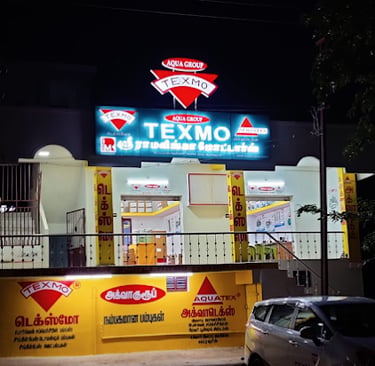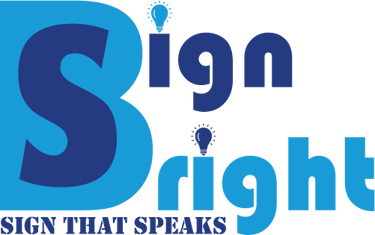Choosing the Right Signage for Your Business: A Guide to Making the Best First Impression
In business, your signage is often the first point of contact between you and a potential customer. It's more than just a name on a board—it's a representation of your brand, values, and professionalism. Choosing the right signage can help your business stand out, attract more customers, and establish trust in a competitive marketplace. So, how do you select the best signage for your business? Here’s a practical guide to help you make the right decision.


1. Identify Your Purpose
Start by defining what you want your signage to achieve. Your goal will determine the type, size, and design of your sign. Ask yourself:
Do I want to attract walk-in traffic?
Am I promoting a product, service, or event?
Do I need signage for branding, direction, or information?
Clear objectives will help you choose signage that delivers results.
2. Consider Your Location
The location of your signage significantly affects its effectiveness. For example:
Outdoor signage should be large, weather-resistant, and easy to see from a distance.
Indoor signage should guide customers, promote sales, or reinforce your brand identity.
Window graphics work well in storefronts to catch the attention of people passing by.
Ensure your signage is visible, readable, and appropriate for the space it occupies.
3. Choose the Right Type of Sign
Different businesses require different types of signs. Here are a few common options:
Backlit Glowsign Boards – Great for visibility at night; perfect for retail stores, clinics, and restaurants.
Channel Letters – Bold and dimensional, often used for brand names on storefronts.
Digital Displays – Ideal for businesses that update messages regularly (like fast food chains, banks, or malls).
Monument Signs – Great for corporate offices, schools, or hotels.
Acrylic or Glass Signs – Professional and sleek, often used in reception areas.
Temporary Signs (like banners or posters) – Ideal for promotions, events, or sales.
Each type has specific benefits based on how, where, and why it’s used.
4. Reflect Your Brand Identity
Your signage should be an extension of your brand. That means using consistent colors, fonts, logos, and messaging. A well-branded sign enhances recognition and builds trust. For example:
A luxury spa might use elegant fonts and calming colors.
A tech company may prefer modern, clean designs with bold shapes.
Your sign should instantly tell customers what kind of business you are.
5. Focus on Visibility and Readability
No matter how beautiful a sign is, it fails if people can’t read it. Ensure:
Font size is appropriate for the viewing distance.
Color contrast makes the text stand out.
Lighting is included if your business operates at night or in low-light areas.
Less is more—stick to a simple, clear message that can be read in seconds.
6. Think About Durability and Maintenance
Different materials offer different levels of durability:
Acrylic, aluminum, and LED signs are durable and weather-resistant.
Vinyl banners or posters are more affordable but meant for short-term use.
If your signage is exposed to the elements, choose materials that can withstand rain, sun, and wind without fading or deteriorating.
7. Know Your Budget
Your budget will influence your options. However, think of signage as an investment, not just an expense. A high-quality sign can attract thousands of customers over its lifetime. Set a realistic budget and prioritize visibility, quality, and design.
8. Stay Compliant with Local Regulations
Before installing any sign, check local laws, permits, and building codes. Municipal regulations may dictate the size, placement, and lighting of your signage. Partnering with a professional sign company can help ensure compliance.
Final Thoughts
Choosing the right signage is a strategic decision that can significantly impact your business success. The right sign attracts customers, builds brand awareness, enhances customer experience, and drives revenue.
Whether you’re opening a new business or updating an existing one, take the time to choose signage that truly reflects who you are—and speaks directly to the customers you want to reach.
